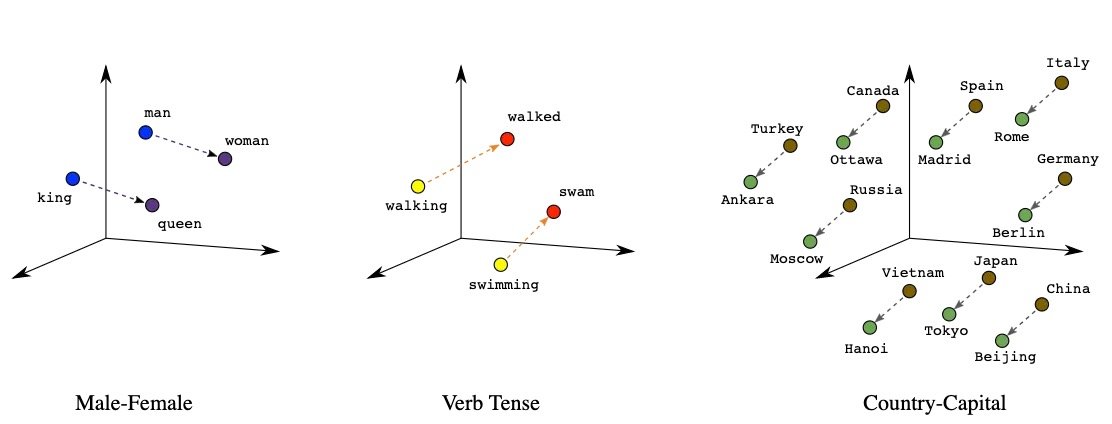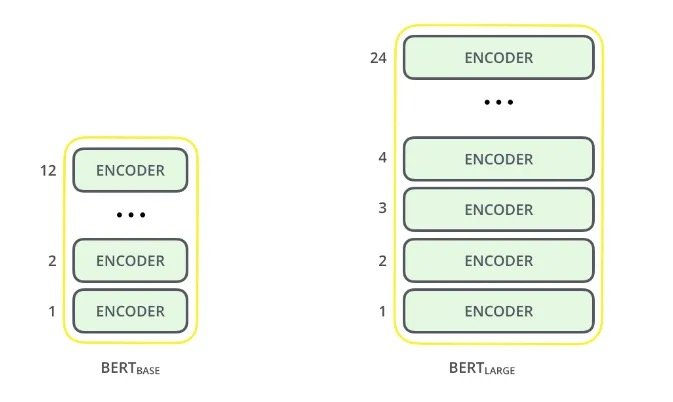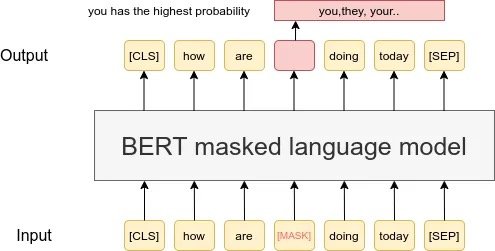What In The Corpus is a Word Embedding?
January 25, 2021
Embeddings visualised. Picture sourced from Bio-inspired Structure Identification in Language Embeddings
While computers are very good at crunching numbers and executing logical commands, they still struggle with the nuances of the human language! Word embeddings aim to bridge that gap by constructing dense vector representations of words that capture meaning and context, to be used in downstream tasks such as question-answering and sentiment analysis. The study of word embedding techniques forms part of the field of computational linguistics. In this article we explore the challenges of modelling languages, as well as the evolution of word embeddings, from Word2Vec to BERT.
Computational Linguistics
Prior to the recent renewed interest in neural networks, computational linguistics relied heavily on linguistic theory, hand-crafted rules, and count-based techniques. Today, the most advanced computational linguistic models are developed by combining large annotated corpora and deep learning models, often in the absence of linguistic theory and hand-crafted features. In this article, I aim to explain the fundamentals and different techniques of word embeddings, whilst keeping the jargon to a minimum and the calculus in the negative.
“What’s a corpus/corpora?” you may ask. Very good question. In linguistics, a corpus refers to an entire set of a particular linguistic element within a language, such as words or sentences. Typically, corpuses (or corpora), are monolingual (of a uniform language) collections of news articles, novels, movie dialogues, etc, etc.
Rare and unseen words
The frequency distribution of words in large corpuses follow something called Zipf’s Law. This law states that, given some corpus of natural language utterances, the frequency of any word is inversely proportional to their rank. This means that if a word like “the” has rank 1 (meaning its the most frequent word), its relative frequency to the rest of the corpus is 1. And, if a word like “of” has rank 2, its relative frequency would be 1/2. And so forth.
The implications of Zipf’s law is that a word with rank 1000 would occur once for every 1st rank word like “the”. And it gets even worse as your vocabulary grows! Zipf’s law means that some words are so rare that they might occur only a few times in your training data of several thousand pieces of text. Or worse, the rare words are absent in your training data but present in your testing data, also known as out-of-vocabulary (OOV) words. This means that researchers need to employ different strategies to upsample the infrequently-found words (also called the long tail of the distribution) as well as build models that are robust to unseen words. Some strategies to deal with these challenges include upsampling, using n-gram embeddings (like FastText) and character-level embeddings, such as ElMo.
Word2Vec, the OG
Every person that has tried their hand at NLP is probably familiar with Word2Vec, which was introduced by Google researchers in 2013. Word2Vec consists of two distinct architectures: Continuous Bag-of-Words (or CBOW) and Skip-gram. Both models produce a word embedding space where similar words are found together, but there is a slight difference in their architectures and training techniques.
Sourced from https://arxiv.org/pdf/1309.4168v1.pdf
With CBOW, we train the model by trying to predict a target word w given a context vector. Skip-gram is the inverse; we train the model by trying to predict the context vector given the target word w. The context vector is just a bag-of-words representation of the words found in the immediate surroundings of our target word w, as shown in the graphic above. Skip-gram is more computationally expensive than CBOW, so down-sampling of distant words is applied to give them less weight. To address the imbalance between rare and common words, the authors also aggressively sub-sampled the corpus — with the probability of discarding a word being proportional to its frequency.
The researchers also demonstrated the remarkable compositionality property of Word2Vec, such that one can perform vector addition and subtraction with word embeddings and find “king” + “women” = “queen”. Word2Vec opened the door to the world of word embeddings, and sparked a decade where language processing now needed bigger and badder machines, and relied less and less on linguistic knowledge.
FastText
The embedding techniques we have discussed up until now represent each word of the vocabulary with a distinct vector, thus ignoring the internal structure of words. FastText extends the Skip-gram model by also taking into account subword information. This model is ideal for languages where grammatical relations like Subject, Predicate, Objects, etc., are reflected by inflections — words are morphed to express changes in their meanings or grammatical relations, rather than by the relative positions of the words or by adding particles.
The reason for this is that FastText learns vectors for character n-grams (almost like subwords — we will get to that in a moment). Words are then represented as the sum of the vectors of their n-grams. The subwords are created as follows:
each word is broken up into a set of character n-grams, with special boundary symbols at the beginning and end of each word,
the original word is also retained in the set,
for example, for n-grams of size 3 and the word “there”, we have the following n-grams:
<th, the, her, ere, re> and the special feature <there>.
There is a clear distinction between the features <the> and the. This simple approach enables sharing representations across the vocabulary, can handle rare words better, and can even handle unseen words (a property the previous models lacked). It trains fast and requires no preprocessing of the words nor any prior knowledge of the language. The authors performed a qualitative analysis and showed that their technique outperforms models that do not take subword information into account.
ELMo
ELMo is an NLP framework developed by AllenNLP in 2018. It constructs deep, contextualized word embeddings that can deal with unseen words, syntax and semantics, as well as polysemy (words taking on multiple meanings given the context). ELMo makes use of a pre-trained two-layer bi-directional LSTM model. The word vectors are extracted from the internal states of a pre-trained deep bidirectional LSTM model. Instead of learning representations for word-level tokens, ELMo is trained to learn representations for character-level tokens. This allows it to effectively deal with out-of-vocabulary words during testing and inference.
The inner workings of a biLSTM. Sourced from https://www.analyticsvidhya.com/
The architecture consists of two layers stacked together. Each layer has 2 passes — a forward pass and a backward pass. To construct character embeddings, ELMo employs character-level convolutions over the input words. The forward pass encodes the context of the sentence leading up to and including a certain word. The backward pass encodes the context of the sentence after and including that same word. The combination of forward and backward LSTM hidden vector representations are concatenated and fed into the second layer of the biLSTM. The final representation (ELMo) is the weighted sum of the raw word vectors and the concatenated forward and backward LSTM hidden vector representations of the second layer of the biLSTM.
What made ELMo so revolutionary at that time (yes, 2018 was a long time ago in NLP years) is that each word embedding encoded the context of the sentence, and that word embeddings were functions of their characters. Thus, ELMo simultaneously addressed the challenges posed by polysemy and unseen words. Besides English, pre-trained ELMo word embeddings are available in Portuguese, Japanese, German, and Basque. The pretrained word embeddings can be used as is in downstream tasks, or further tuned on domain-specific data.
BERT
Google Brain researchers introduced BERT in 2018, a few months after ELMo. Back then, it smashed records for 11 benchmark NLP tasks, including the GLUE task set (which consists of 9 tasks), SQuAD, and SWAG. (Yes, the names are funky, NLP is full of really fun people!)
BERT stands for Bidirectional Encoder Representations from Transformers. Unsurprisingly, BERT makes use of the encoder part of the Transformer architecture, and is pre-trained once in a pseudo-supervised fashion (more on that later) on the unlabelled BooksCorpus (800M words) and the unlabelled English Wikipedia (2,500M words). The pre-trained BERT can then be fine-tuned by adding an additional output (classification) layer for use in various NLP tasks.
If you are unfamiliar with the Transformer (and Attention Mechanisms), check out this article I wrote on the topic. In their highly-memorable paper titled “Attention Is All You Need”, Google Brain researchers introduced the Transformer, a new type of encoder-decoder model that relies solely on attention to draw global dependencies between the input and output sequences. The model injects information about relative and absolute positions of tokens using positional encodings. A token representation is calculated as the sum of the token embedding, the segment embedding and the positional encoding.
In essence, BERT consists of stacked Transformer encoder layers. In Google Brain’s paper, they introduce two variants: BERT Base and BERT Large. The former consists of 12 encoder layers and the latter 24. Similar to ELMo, BERT processes sequences bidirectionally, which enables the model to capture context from left to right, and then again from right to left. Each encoder layer applies self-attention, and passes its outputs through a feed-forward network, and then onto the next encoder.
Alammar, J (2018). The Illustrated Transformer [Blog post]. Retrieved from https://jalammar.github.io/illustrated-transformer/
BERT is pretrained in a pseudo-supervised fashion using two tasks:
Masked Language Modelling
Next Sentence Prediction
Why I say pseudo-supervised is because neural networks inherently need supervision to learn. To train the Transformer, we transform our unsupervised tasks into supervised tasks. We can do this with text, which may be considered series of words. Remember that the term bidirectionalmeans that the context of a word is a function of the words preceding it and by the words following it. Self-attention combined with bidirectional processing would mean that the language model is all-seeing, making it difficult to actually learn the latent variables. Along comes Masked Language Modelling, which exploits the sequential nature of text, and makes the assumption that a word can be predicted using the words surround it (the context). For this training task, 15% of all the words are masked.
Sourced from researchgate.net
The MLM task helps the model learn the relationships between different words. The Next Sentence Prediction (NSP) task helps the model learn the relationships between different sentences. NSP is structured as a binary classification task: given Sentence A and Sentence B, does B follow A, or is it just a random sentence?
These two training tasks are enough to learn really complex language structures — in fact, a paper titled “What does BERT learn about the structure of language?” demonstrated how the layers of BERT captures more and more granular levels of language syntax. The authors showed that the bottom layers of BERT capture phrase-level information, while the middle layers capture syntactic information, and the top layers semantic information.
Since its inception, BERT has inspired many recent state-of-the-art NLP architectures, training approaches and language models, including Google’s TransformerXL, OpenAI’s GPT-3, XLNet, RoBERTa, and Multilingual BERT. It’s universal approach to language understanding means that it can be fine-tuned with minimal effort to a variety of NLP tasks, including question-answering, sentiment analysis, sentence-pair classification, and named entity recognition.
Conclusion
While word embeddings are very useful and easy to compile from a corpus of texts, they are not magic unicorns. We highlighted the fact that many word embeddings struggle with disambiguity and out-of-vocabulary words. And although it is relatively easy to infer semantic relatedness between words based on proximity, it is much more challenging to derive specific relationship types based on word embedding. For example, even though puppy and dog may be found close together, knowing that a puppy is a juvenile dog is much more challenging. Word embeddings have also been shown to reflect ethnic and gender biases that are present in the texts that they are trained on.
Word embeddings are truly remarkable in their ability to learn very complex language structures when trained on large amounts of data. To the untrained eye (or untrained 4IR manager), it may even seem magical, and therefore it is very important to highlight and keep these limitations in mind when we use word embeddings.
If you enjoyed this blog post, please consider supporting my writing by buying me a coffee.







